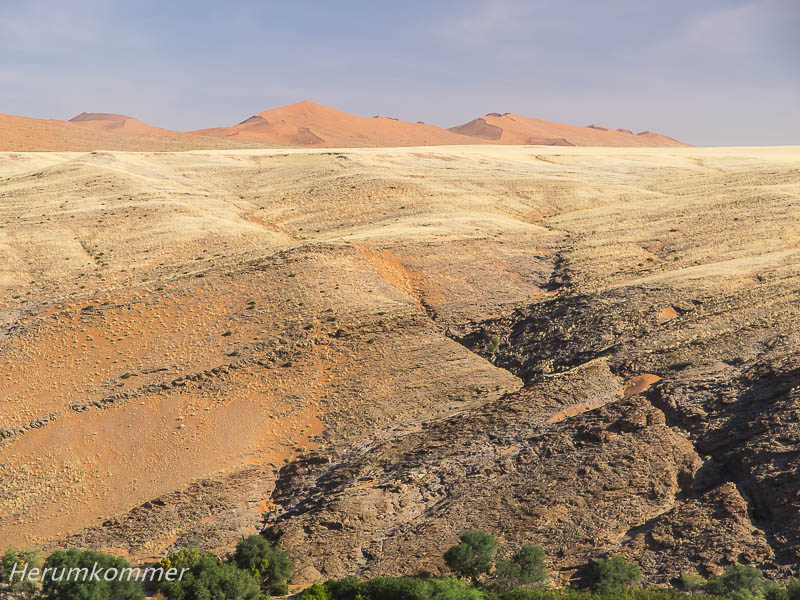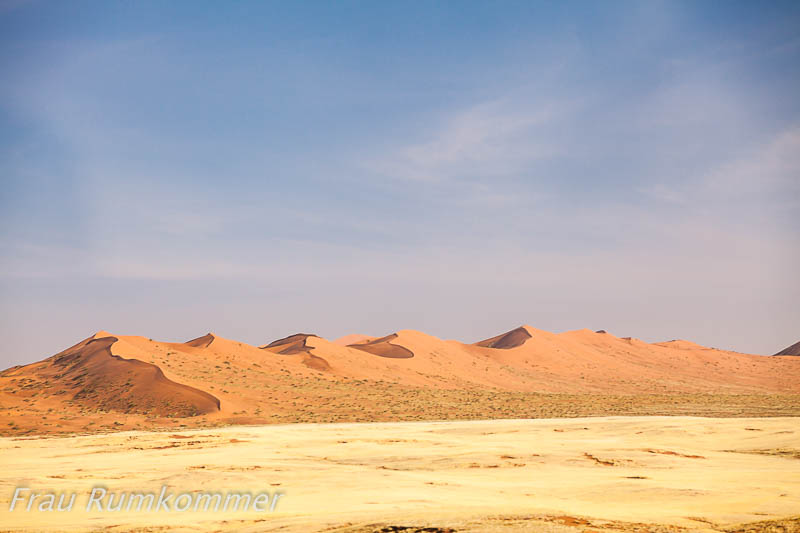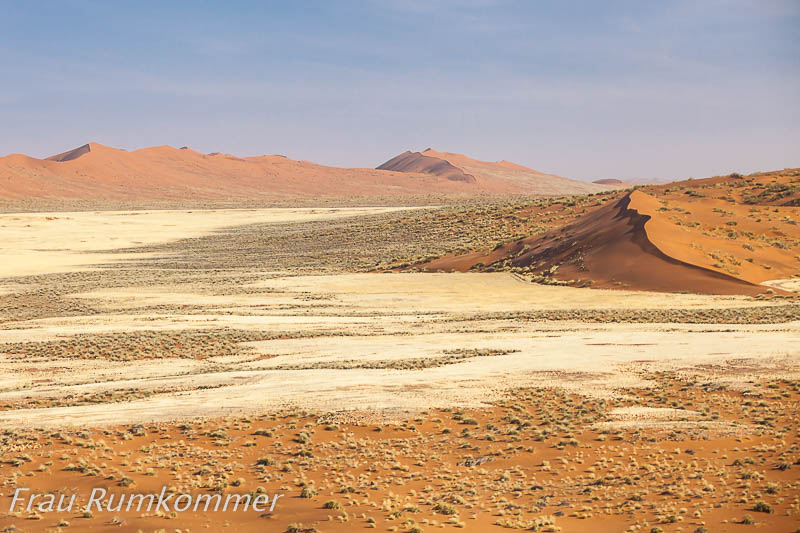
In Swakopmund haben wir drei Übernachtungen in „Meikes Gästehaus“ gebucht, mitten in der Stadt. Der Name ist offenbar Understatement, wir haben dort eine große Wohnung und ein gutes, vielfältiges Frühstücks-Buffet. Den bewachten Parkplatz wissen wir zu schätzen. Meike und ihr Mann Klaus haben eine angenehm unaufgeregte Art, sich um die Gäste zu kümmern. Am Sonntagnachmittag bzw. -abend reserviert uns Meike einen Tisch im Restaurant und Ausflugsaktivitäten für die beiden folgenden Tage.
Die erste dieser Aktivitäten ist ein Rundflug über die Wüste Namib mit „Bush Bird“. Am Nachmittag werden wir zum Flugplatz außerhalb Swakopmund gefahren. Von dort starten wir mit zwei weiteren Passagieren in einem fünfsitzigen Einpropellerflugzeug und fliegen zunächst nach Südosten. Es ist dunstig und wir fotografieren durch die Fensterscheiben des Flugzeugs, daher sind die Fotos teilweise weichgezeichnet.
Flight with Bush Bird
In Swakopmund we have booked three nights in „Meike’s Guesthouse“, right in the middle of the city. The name is obviously understated, we have a large apartment and a good, varied breakfast buffet. We appreciate the guarded parking lot. Meike and her husband Klaus have a pleasantly relaxed way of looking after their guests. On Sunday afternoon and evening Meike reserves us a table in the restaurant and excursion activities for the following two days.
The first of these activities is a scenic flight over the Namib Desert with “Bush Bird”. In the afternoon we are driven to the airfield outside Swakopmund. From there we start with two other passengers in a five-seat single-propeller plane and first fly to the southeast. It is hazy and we take pictures through the window glass of the plane, so the photos have a partly soft-focus effect.










Bei der Gobabeb Wüstenforschungsstation erreichen wir den Kuiseb Trockenfluss. Er fließt nur drei- bis viermal jährlich für ein paar Tage. Linear- bzw. Reihendünen prägen hier das Landschaftsbild.
At the Gobabeb Desert Research Station we reach the Kuiseb dry river. It flows only three to four times a year for a few days. Linear dunes characterize the landscape here.





Flussaufwärts kommen wir zum Kuiseb Canyon. Die schwarzen Schieferfelsen des Canyon bilden einen starken Kontrast zu den rötlichen Sanddünen und dem gelblichen Bewuchs. Weiter südlich passieren wir das Tsondab Vlei und den Tsondab Trockenfluss.
Upstream we come to the Kuiseb Canyon. The black schist rocks of the Canyon form a stark contrast to the reddish sand dunes and the yellowish natural cover. Further south we pass the Tsondab Vlei and the Tsondab dry river.












